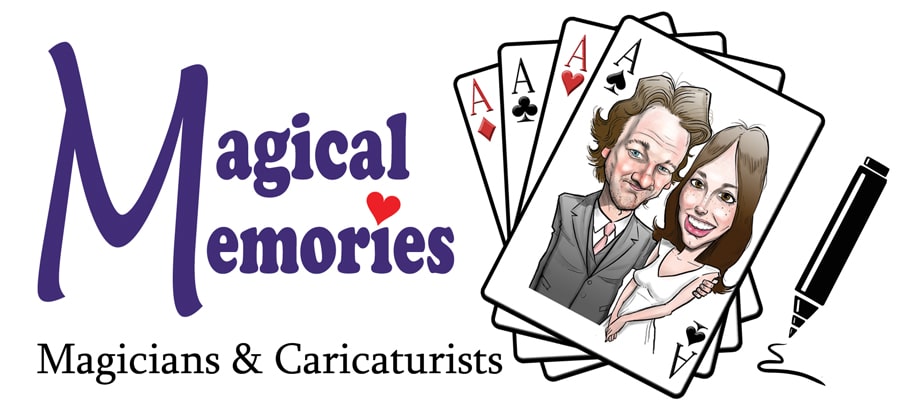
When booking entertainment for an important event, reviews and testimonials often play a crucial role in your decision-making process. This is especially true when hiring a professional caricaturist, as the quality and experience can vary significantly between artists. However, in today’s digital landscape, not all reviews are created equal—or honestly. This comprehensive guide will help you navigate caricaturist reviews with a discerning eye, ensuring you can separate genuine feedback from misleading or fabricated testimonials.
Why Fake Reviews Exist in the Entertainment Industry
Before diving into how to spot fake reviews, it’s important to understand why they exist:
- New artists building a reputation: Artists just starting out may feel pressured to create positive reviews to attract their first clients
- Competitive advantage: In crowded markets, some entertainers use fake reviews to appear more established than they are
- Damage control: Some may create positive reviews to counterbalance genuine negative feedback
- Marketing strategy: Some view fake reviews as simply another marketing tactic
Understanding these motivations can help you be more discerning when evaluating caricaturist reviews.
Red Flags: Signs of Fake Caricaturist Reviews
1. Vague, Generic Content
Fake reviews often lack specific details about the caricaturist’s performance:
- Generic statements like “Great artist!” or “Highly recommended!” without specifics
- No mention of the event type, venue, or specific aspects of the service
- Absence of personal anecdotes or guest reactions
- Overuse of superlatives without supporting evidence
Example of a suspicious review: “Amazing caricaturist! Everyone loved it. Would hire again!”
Example of a likely genuine review: “James created fantastic caricatures at our corporate Christmas party at The Grand Hotel. He arrived 30 minutes early to set up, was professionally dressed, and drew about 35 guests during his 3-hour booking. Our CEO was particularly impressed with how he captured her distinctive laugh!”
2. Unnatural Language Patterns
The writing style of fake reviews often stands out:
- Awkward phrasing or grammar that suggests non-native English writing
- Overly formal or marketing-like language
- Repetitive use of the artist’s name and services in an unnatural way
- Excessive use of keywords that seem designed for search engines rather than human readers
Example of suspicious language: “John Smith Caricatures provided exceptional caricature services at our event. John Smith’s caricatures were loved by all guests. We highly recommend John Smith for all your caricature needs.”
3. Suspicious Timing and Patterns
The timing and pattern of reviews can reveal their authenticity:
- Multiple 5-star reviews posted within a short timeframe (e.g., several in one day after months of no reviews)
- A sudden influx of positive reviews following negative feedback
- Reviews that all have similar word counts, structure, or writing style
- Reviews that appear to respond to specific criticisms without explicitly mentioning them
4. Reviewer Profiles and History
Examining who left the review can provide valuable clues:
- New accounts with no review history except for the caricaturist in question
- Profiles with no personal information, photos, or identifying details
- Reviewers who have only reviewed businesses in completely unrelated industries
- Multiple reviews from accounts with similar naming patterns
Take time to click through to reviewer profiles on platforms like Google, Facebook, or Trustpilot to assess their credibility.
5. Lack of Balance or Nuance
Even the best service providers occasionally receive constructive criticism:
- A perfect 5-star rating across dozens of reviews with no criticism whatsoever is unusual
- Genuine reviews often mention small improvements or minor issues alongside praise
- Reviews that dismiss or aggressively counter any negative points may be suspicious
- A complete absence of 3 or 4-star reviews (which are common from satisfied but honest customers)
6. Missing Visual Evidence
For caricaturists specifically, look for:
- A lack of photos showing the artist at work at actual events
- No examples of completed caricatures from real events (as opposed to portfolio pieces)
- Missing photos of guests reacting to their caricatures
- Images that appear stock-like or professionally staged rather than authentic event photos
Genuine reviews for visual artists often include photos of the artwork or the artist in action.
Where to Find Reliable Caricaturist Reviews
1. Verified Booking Platforms
Some platforms only allow reviews from verified customers:
- Entertainment booking sites that verify performances took place
- Platforms that label reviews as “verified purchase” or “verified booking”
- Wedding planning websites that confirm the vendor was part of a real wedding
2. Social Proof Beyond Written Reviews
Look for evidence beyond traditional reviews:
- Tagged social media posts from real events
- Video testimonials (which are harder to fake)
- Event photos showing the artist in action with real clients
- Live streams or stories from past events
3. Direct References
The most reliable feedback often comes directly from previous clients:
- Ask the caricaturist for references you can contact directly
- Speak with venue managers or event planners who have worked with the artist
- Connect with real past clients through networking or social media
A reputable caricaturist should be happy to provide references from previous clients.
Questions to Ask When Evaluating Reviews
When reading caricaturist reviews, ask yourself:
- Does this review mention specific details about the event and service?
- Are there aspects of the review that couldn’t be written without actually experiencing the service?
- Does the review mention both positives and any constructive feedback?
- Is there evidence (photos, videos) supporting the review?
- Does the reviewer’s profile and history seem legitimate?
- Would a real client care about the specific aspects mentioned in the review?
How Magical Memories Ensures Authentic Reviews
At Magical Memories, we take review authenticity seriously:
- We only publish reviews from verified clients who have booked through us
- We encourage clients to include photos and specific details in their feedback
- We never edit or alter reviews (except for privacy reasons when requested)
- We publish all legitimate feedback, including constructive criticism
- We regularly follow up with clients after events to collect authentic testimonials
- We can provide direct references from past clients upon request
Beyond Reviews: Additional Research Methods
While reviews are valuable, supplement your research with:
- Portfolio assessment: Examine the artist’s style and quality through their portfolio
- Live demonstrations: Some artists offer samples or live demonstrations before booking
- Industry reputation: Check if the artist is recognized within professional organizations
- Social media presence: Look for consistent posting of recent event work
- Video content: Watch videos of the artist drawing to assess their speed and interaction style
Conclusion
Finding a talented, reliable caricaturist for your event requires looking beyond star ratings and reading between the lines of online reviews. By applying the strategies outlined in this guide, you’ll be better equipped to distinguish genuine feedback from fabricated reviews, leading to a more informed booking decision.
At Magical Memories, we pride ourselves on representing only verified, professional caricaturists with proven track records of client satisfaction. We welcome your questions about our artists’ experience and are happy to provide authentic references from past events similar to yours. Contact us today to discuss how we can help you find the perfect caricaturist for your special occasion.
